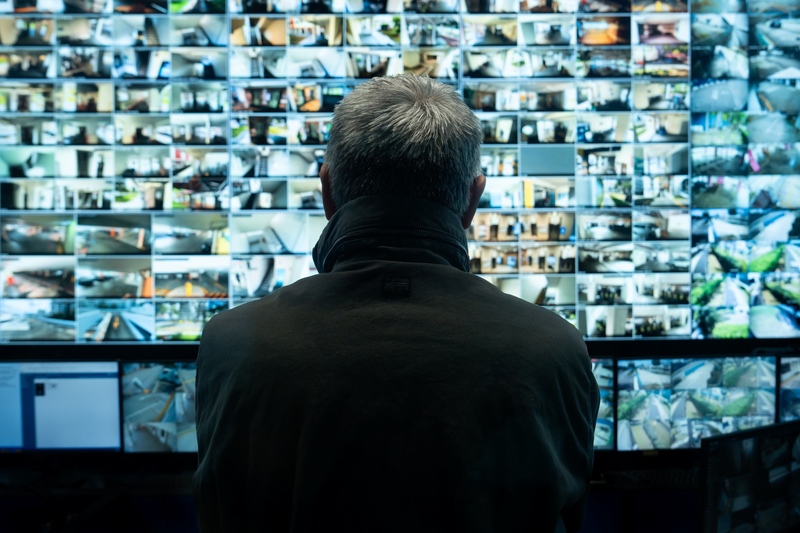
Between Grief and Imagination, Reality Collapses
MOVIE REVIEW
Sanatorium Under the Sign of the Hourglass
–
Genre: Fantasy, Drama, Animation
Year Released: 2024, 2025
Runtime: 1h 16m
Director(s): Stephen Quay, Timothy Quay
Writer(s): Stephen Quay, Timothy Quay, Bruno Schulz
Cast: Tadeusz Janiszewski, Wioletta Kopańska, Andrzej Kłak, Allison Bell, Zenaida Yanowsky
Where to Watch: US Theatrical Premiere August 29, 2025, at Film Forum
RAVING REVIEW: Some films whisper from the edge of consciousness, asking viewers not to understand them but to inhabit them. SANATORIUM UNDER THE SIGN OF THE HOURGLASS, the new feature from Stephen and Timothy Quay, belongs entirely to that realm. After a two-decade hiatus from feature-length storytelling, the brothers have returned with a piece that is less a conventional narrative than a moving installation. This artwork navigates a space between cinema, sculpture, and the realm of dreams. It is as much a test of patience as it is a demonstration of creativity and imagination; it exists in the space between admiration and frustration.
Adapted from Bruno Schulz’s writings, the film opens on a spectral train journey, a passage into the unknown that immediately signals its logic. Józef, played by Andrzej Kłak, arrives at a sanatorium where his father’s death is both past and yet unrealized. The world he enters refuses measurement. Time falters, objects resist meaning, and even the self fractures into doubles and shadows. This refusal of linearity is not accidental; it is the Quays’ intent. They lean fully into Schulz’s fragmented mythology, creating a world where the most mundane detail—a drawer, a lens, a string—becomes a vessel for unease. It is haunting in ways that resist easy description.
The Quays are, of course, renowned for their mastery of stop-motion puppetry, and here they interweave it with live action more aggressively than ever. Puppets, mannequins, and physical fragments coexist with flesh-and-blood actors in the same space, blurring the boundary between reality and construction. The result is intoxicating, yet also alienating. Watching SANATORIUM feels like wandering through an exhibition where every corner contains some exquisite miniature, but the arrangement offers little guidance. Unsettled, yet often left outside the emotional center. For some, this is exhilarating; for others, exhausting.
What cannot be denied is the visual intrigue. The Quays’ attention to texture remains unmatched. A simple corridor becomes a living organism, its shadows breathing with menace. Dust, fabric, broken glass, and splintered wood assume symbolic significance. Objects seem to act of their own accord, as if mocking the human characters who stumble among them. The sanatorium itself feels like a trap, designed not to kill but to confuse, rendering its inhabitants incapable of escaping their fractured perceptions. In this environment, Józef’s search for his father becomes less about reconciliation and more about confronting the impossibility of permanence. The past cannot be fixed, and the present cannot be trusted.
And yet, despite the elegance, the emotional register struggles. Józef’s journey is deeply personal—a son searching for a father—but the film holds viewers at arm’s length. The Quays are not interested in melodrama or catharsis. Instead, they plunge into abstraction, prioritizing atmosphere over intimacy. One can admire the technique while yearning for a stronger tether to the human story beneath. It’s this tension—between form and feeling—that ultimately defines the experience. The Quays deliver a spectacle, but one that sometimes forgets the need for a pulse.
There are moments, however, when emotion does pierce through. A father glimpsed in a fleeting gesture, only to dissolve into another vision. A figure doubled, as if haunted by versions of himself that never fully coalesce. A puppet turning its head with slowness, embodying grief in the simplest of movements. These fragments, scattered throughout, give the film its power. They linger long after the final frame, even as the narrative refuses to resolve.
The score enhances the sense of otherworldliness. The Quays have always treated sound as integral to their worlds, and here they employ it as both guide and destabilizer. At times, the music soars, carrying the viewer into the poetic rhythms of Schulz’s text; at other times, it drones, heavy and oppressive, deepening the sense of entrapment. Combined with the sound design—scrapes, whispers, echoing footsteps—it ensures that the sanatorium is not merely seen but felt, vibrating with unseen forces.
For admirers of surrealist cinema, this is a treat. It recalls the unsettling textures of Jan Švankmajer, the dreamscapes of Lynch, and the experiments of Guy Maddin. Yet the Quays are not imitators. Their vision remains singular, their devotion to detail almost obsessive. Watching this film is to enter a world crafted by artists who believe in cinema’s ability to transform the ordinary into the uncanny. But that same devotion also leads them to resist accessibility.
It is not entertainment in the conventional sense, and it does not seek to be. Instead, it positions itself as an immersive, challenging experience—a puzzle that may not have a solution, for some, that will be intoxicating. For others, it will feel like a test of endurance. But for those willing to meet it on its terms, it offers moments of genuine transcendence.
SANATORIUM UNDER THE SIGN OF THE HOURGLASS is a work of contradictions. It is mesmerizing and alienating, poetic and impenetrable, beautiful and exhausting. The Quay Brothers have crafted a piece that demands patience, even surrender. And while it may not connect fully on an emotional level, its images echo like fragments of a dream long after waking.
Please visit https://linktr.ee/overlyhonestr for more reviews.
You can follow me on Letterboxd, Instagram, Twitter, and YouTube. My social media accounts can also be found on most platforms by searching for 'Overly Honest Reviews'.
I’m always happy to hear from my readers; please don't hesitate to say hello or send me any questions about movies.
[photo courtesy of KONINCK STUDIO SPK GALICIA, IKH PICTURES PRODUCTION, TELEWIZJA POLSKA (TVP), THE MATCH FACTORY, ADAM MICKIEWICZ INSTITUTE]
DISCLAIMER:
At Overly Honest Movie Reviews, we value honesty and transparency. Occasionally, we receive complimentary items for review, including DVDs, Blu-rays, CDs, Vinyl Records, Books, and more. We assure you that these arrangements do not influence our reviews, as we are committed to providing unbiased and sincere evaluations. We aim to help you make informed entertainment choices regardless of our relationship with distributors or producers.
Amazon Affiliate Links:
Additionally, this site contains Amazon affiliate links. If you purchase through these links, we may receive a commission. This affiliate arrangement does not affect our commitment to honest reviews and helps support our site. We appreciate your trust and support in navigating these links.



Average Rating